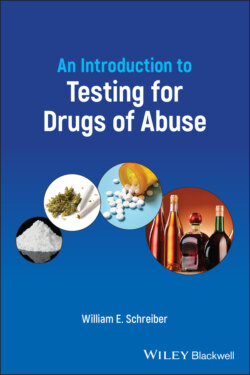Читать книгу An Introduction to Testing for Drugs of Abuse - William E. Schreiber - Страница 37
Assessing Validity
ОглавлениеAssessment of specimen validity begins with measuring urine temperature, which should be 90–100 °F (32–38 °C) within 4 minutes of collection. The physical appearance is also evaluated for color and consistency, and any unusual odor is noted.
The following chemical tests are run on patient samples to detect tampering that may give a false result.
| Creatinine | Creatinine is excreted in urine and serves as a marker for this fluid. Random urine specimens contain at least 20 mg/dL (1.8 mmol/L) of creatinine. Values below this level may indicate a dilute or substituted sample |
| Specific gravity | This test measures the number of solute particles in urine. The reference range for specific gravity is 1.002–1.030. A low specific gravity may indicate a dilute or substituted sample |
| pH | Normal human urine has a pH between 4.5 and 9.0. Adulteration of a sample with an acid or base will alter the pH |
| Oxidant | Tests for oxidants can detect chromate, nitrite, bleach, peroxide, and iodine. Normal human urine does not contain oxidants above the assay cut‐off, and increased values may indicate adulteration |
| Nitrite | Nitrite is not detectable in normal urine samples, but it may be elevated in patients with a urinary tract infection. High levels of nitrite may indicate an adulterated sample |
| Chromate | Chromate is an effective oxidizing agent, and it is not normally present in human urine. A positive test suggests that the urine sample has been adulterated |
| Aldehyde | Glutaraldehyde and other aldehydes are not present in normal human urine. A positive test suggests that the sample has been adulterated |
